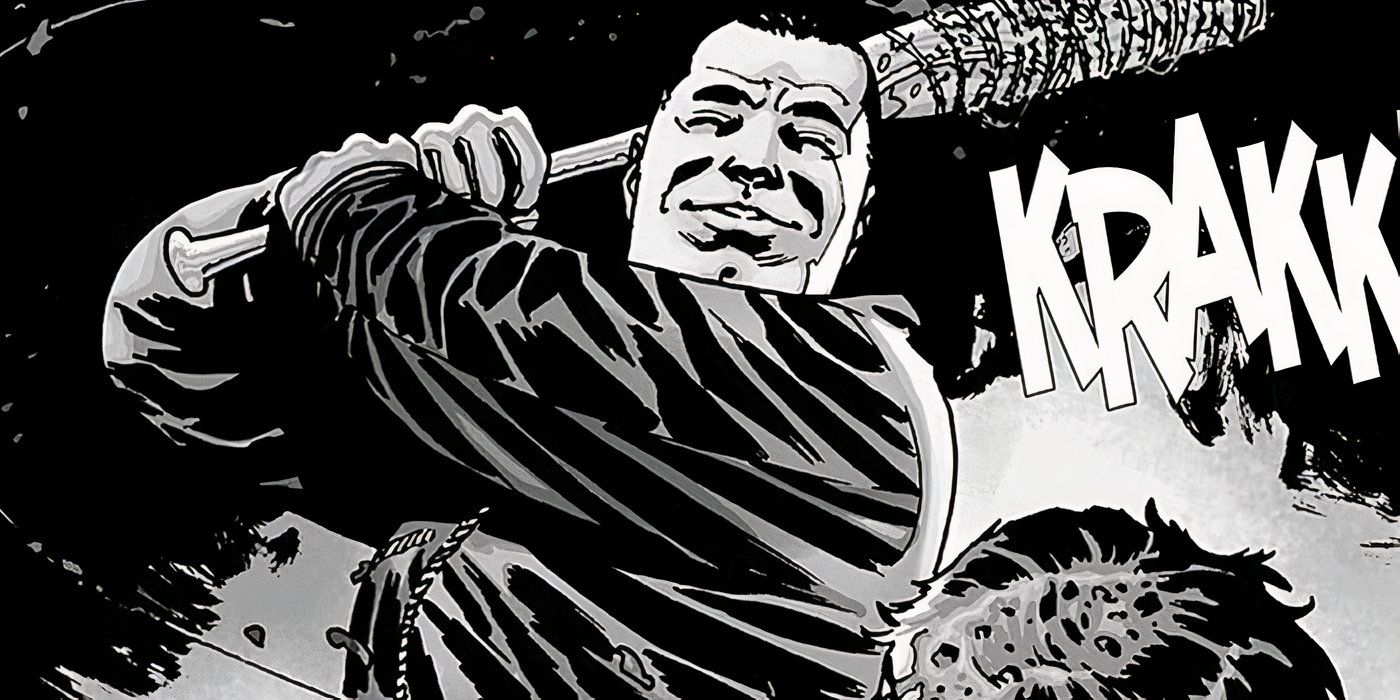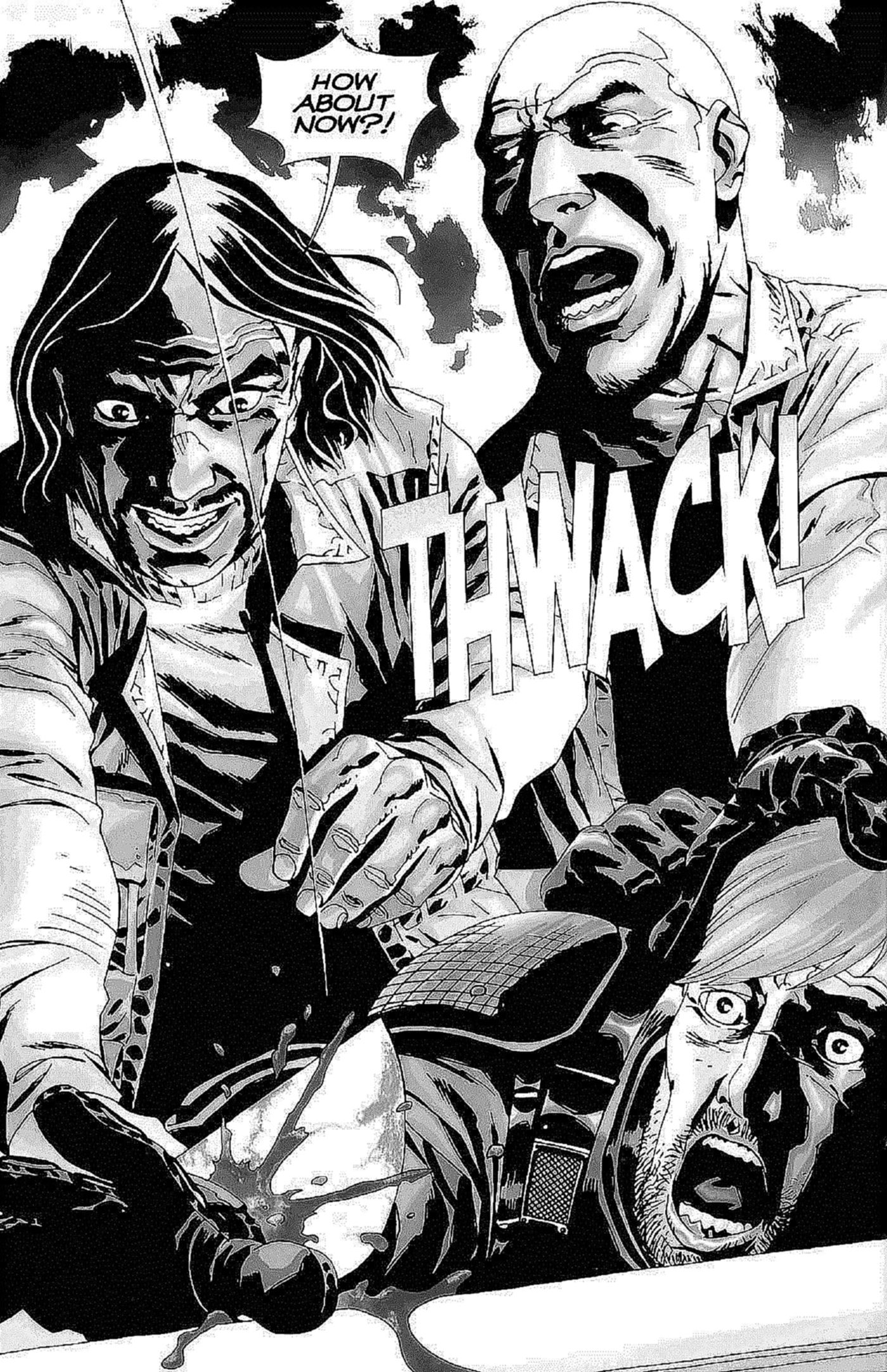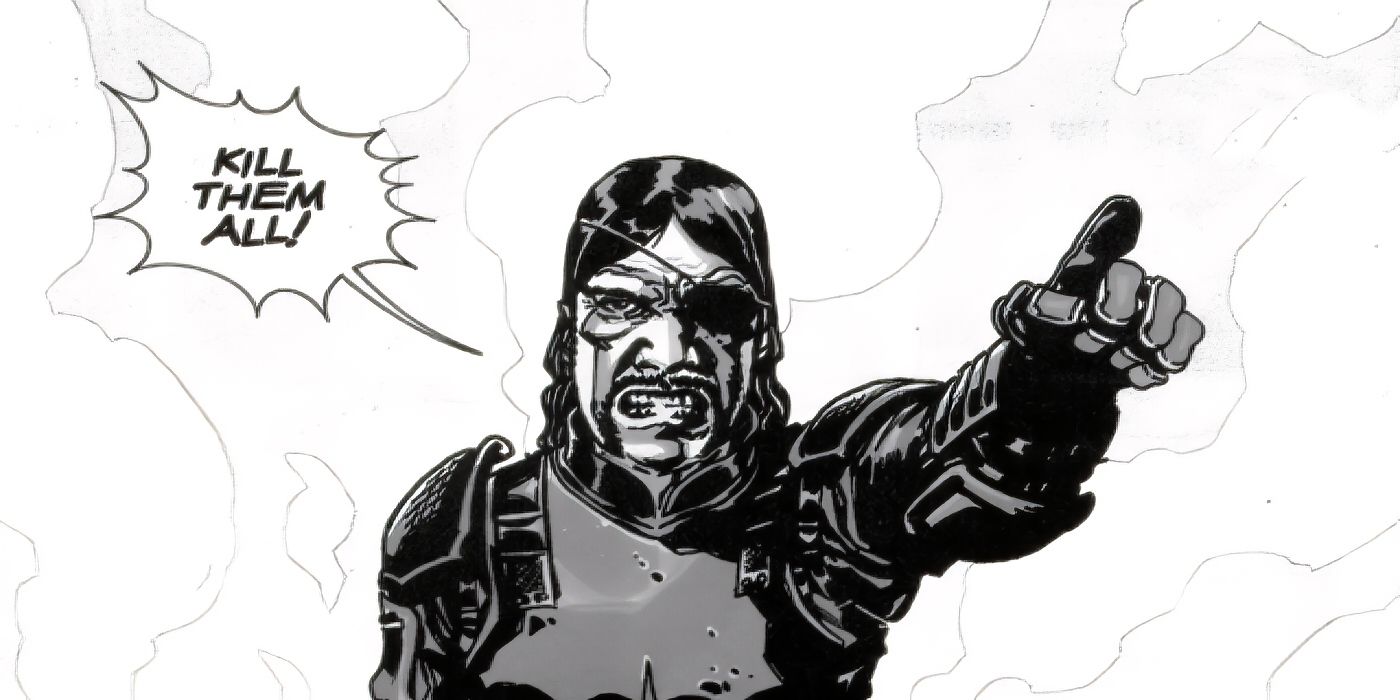Many stories are defined, at least in part, by the quality of their villains; that is certainly the case for The Walking Dead, which served up an imposing roster of unforgettable antagonists over the years.
The Governor was the series’ first “Big Bad,” but in retrospect, he remains The Walking Dead’s gold standard for viciousness and cruelty. Author Robert Kirkman might have tried to top the Governor’s heinous actions as the series progressed, including with Negan, but every subsequent act of depravity was, in a way, conducted in the shadow of the precedent set by the Governor.
The Governor Is The Most Evil Villain In Walking Dead History, Not Negan
Introduced in The Walking Dead #27; Killed In The Walking Dead #48
The introduction of the Governor in Walking Dead #27 was a massive turning point; it was clear from early in the story that author Robert Kirkman was more interested in chronicling the conflicts between human characters amidst the zombie apocalypse, but the Governor and his people were the first time, but far from the last, the Rick Grimes’ central group of survivors went up against another group of survivors with more people, more resources, and more weapons. In other words, with the Governor, Robert Kirkman established a core facet of the series he would elaborate on for hundreds more issues.
More than that, the Governor also set a high bar for nastiness, which included shockingly maiming Rick by cutting off his hand, as well as torturing characters like Glenn and Michonne, and most disturbingly of all, sexually assaulting Michonne. This latter example of the Governor’s depravity alone distinguishes him as a worse villain than Negan, who for all his own gruesome tendencies, was intentionally depicted as being against violent sexual assault, though this character trait has admittedly been called into question by fans, who rightly cite his coercive relationship with his “wives” as being at odds with this stance.
Negan Became A Fan-Favorite Character; Why That Changes His Overall Impact As A Villain
Introduced In The Walking Dead #100; Survived The Series

Though his fearsome reputation preceded him, Negan’s formal introduction to The Walking Dead came in the milestone one-hundredth issue, in which he instantly elevated himself right alongside the Governor, in terms of hated-status among the fandom, by brutally executing Glenn. In his early appearances, Negan was an absolute menace, pushing the book’s weary survivors to their absolute limit, and nearly breaking Rick Grimes in a way that even the Governor hadn’t managed to. Nevertheless, Rick got the upperhand in the end, but in a fateful creative decision, Robert Kirkman had him spare the antagonist.
It can be debated whether Negan ever became a “good” person, or atoned for his prior crimes, but he certainly moved from the “antagonist” to “protagonist” column as the series went on.
The Governor's Motivations Were More Diabolical Than Any Other Walking Dead Antagonist
An Unchecked Lust For Power

Essential to the success of The Walking Dead was author Robert Kirkman’s ability to provide psychological depth to his characters, even those that might at first seem more “one dimensional” than others. That is, the Governor might not have any redeemable qualities, but he was far from a one-note villain. He was, instead, presented as utterly megalomaniacal, the kind of person who should be kept as far from power as anyone in history, who society might have kept in check, but whom the zombie apocalypse empowered to carry out his malevolent desire for control and power.
It can be argued that much of Negan’s persona was performative, even a trauma response to the end of the world, whereas the zombie outbreak revealed the “true” Governor.
This is, therefore, another concrete reason for why it can be said that the Governor eclipses Negan in terms of villain. While certainly a narcissist, one who declared his group the “Saviors” of humanity, after all, Negan’s behavior never reached full-blown megalomania; further, it can be argued that much of Negan’s persona was performative, even a trauma response to the end of the world, whereas the zombie outbreak revealed the “true” Governor, who had been lurking under the surface of an ordinary individual pre-zombies.
Negan Is More Important To The Walking Dead's Legacy, But The Governor Takes "Top Villain" Status
The Franchise's Most Evil Character

It is worth acknowledging that there are different criteria that can be applied to the "greatest Walking Dead villain" debate. In terms of who might be called the "most impactful antagonist," Negan and the Governor are neck-and-neck in the race. When discussing the "most memorable villain," it is fair to say Negan makes a stronger impression, especially in his earliest appearances. However, if the question is of "most evil," the Governor almost certainly surpasses Negan, even before the latter's redemption arc is taken into account.
Especially considering his iconic live-action embodiment by Jeffery Dean Morgan, Negan is certainly the “greater” of the two characters; his survival and redemption in the comics made The Walking Dead more morally complex, and has become integral to the franchise’s overall legacy. Yet when speaking about the “worst” foe Rick Grimes and The Walking Dead’s survivors ever faced, the Governor should absolutely be considered as occupying the number one spot, as truly the most unhinged and unforgivable monster in the series’ canon.





